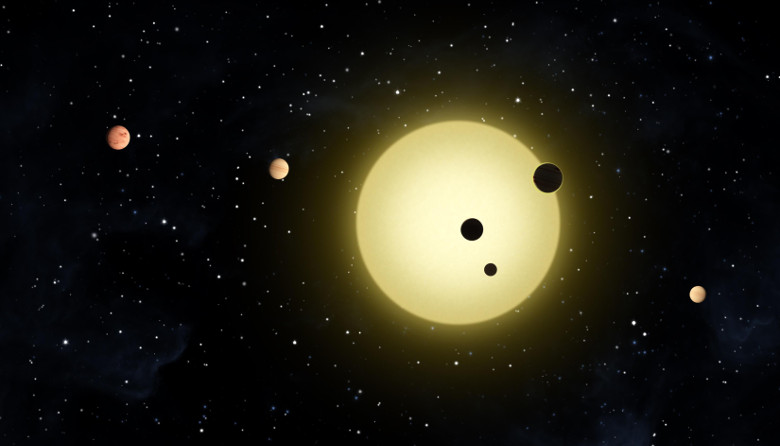In another boost for planet hunters looking for complex multi-planet systems, an international team of astronomers have detected a six-planet system around an ageing Sun-like star 45 parsecs away. The discovery was made with data that spans 18 years and includes 333 precision radial velocity observations.
Earlier this year, the announcement that a seven-planet system – many of which are Earth-size – had been found orbiting around a star only slightly larger than Jupiter, grabbed the attention of astronomers and enthusiasts alike. The system known as Trappist-1, set a new record for the greatest number of habitable-zone planets found around a single star outside our solar system. The system has since become so famous, it now has its own dedicated website.
Such a discovery was monumental, not only because of the number of Earth-sized planets found, but that we had finally found a system with more than two or three planets orbiting their host star. It also begged the question, if we could find one system like this, could we find anymore?
Finding large multi-planet systems is rather difficult. It requires stable, high-precision Doppler (radial-velocity) monitoring and telescopes that are separated by hundreds or thousands of kilometres, working together to form an interferometer.
Nonetheless, with the aid of observations from Keck Observatory, Magellan at Las Campanas Observatory, and the Automated Planet Finder at Lick Observatory and a data set that spans nearly two decades, a team, whose lead author on the research paper is Steven S. Vogt from the Lick Observatory, University of California at Santa Cruz, have revealed that six planets have been found in orbit around HD 3445.
HD 34445 was first reported to host a planet in 2010 and subsequent observations revealed that the star hosted a quite complex multi-planet system. HD 3445 is a G0V type star. Our Sun for example is a G2V type star (the 0 represents the hottest stars of a given class, so the Sun is cooler than HD 34445). HD 34445 is also slightly more massive than the Sun and around 2 to 4 billion years older.
The planets around HD 3445 have orbital periods of 1057, 215, 118, 49, 677, and 5700 days, and minimum masses of 0.63, 0.17, 0.1, 0.05, 0.12 and 0.38 (compared with Jupiter) respectively.
All of the planets were found via the radial-velocity method. This method is often to referred to as the ‘wobble’ method and put (very) basically, it involves looking at the change in light that occurs when the gravitational pull of a planet causes the parent star to move back and forth, I.e wobble.
While HD 3445 may be one planet short of Trappist-1, it also differs in other fundamental aspects, for example, according to the authors HD 3445 system is unlikely to harbour any Earth-like habitable planets in the system. However, the team do state that “Earth-sized moons orbiting HD 34445b [orbits in 1054 days] and HD 34445f [orbits in 677 days] could potentially have liquid water on their surfaces.”
Given the wide-range of orbits of the 6 planets (that last anywhere from tens to thousands of days), this system is therefore quite unlike our own Solar System or other multiple-transiting systems discovered with Kepler to date. And unfortunately, the authors are not so optimistic that finds such as this one will be commonplace.
A study such as the one described in their paper, “is a very costly enterprise (in terms of telescope time), and given that these planets seem clearly uninhabitable, it is difficult to sustain the required cadence of observations on a heavily competed telescope,” note the authors of the paper.
So far, less than a handful of systems with six known planets have been found, while those with seven known planets are equally sparse. The star with the most confirmed planets is our Sun, with 8 confirmed planets. But with future missions such as PLATO and TESS to look forward to, perhaps more large multi-planet systems will be found.
For more information on this research, see here











